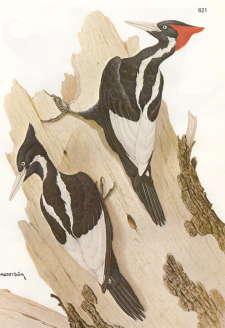Monthly Archives: January 2019
The Roots of Creationism
Never forget that the claim of today’s Young Earth creationists to be following the Bible is simply untrue. The fantastical convulsions, supposedly occurring at the time of the Flood, that they invoke to explain the facts of geology are not at all biblical, but derived from the visions of Ellen White, founder-prophetess of Seventh-day Adventism. In this post, my friend Michael Roberts, geologist and priest, gives us a sample of the extensive scholarship in which he sets the record straight.
Peddling and Scaling God and Darwin
Where did Creationism come from?
Creationism still confuses many people. So often it is seen as a throw-back to the time when people were not so enlightened or intelligent and under the sway of church dogma.
It is amazing some still hold that and fail to recognise the scientific skills of those in the Middle Ages – most notably Christians and clergy like Bacon, Grossteste among others.
We may despair, as I do of those like Ken Ham, Henry Morris and others, who try to prove the earth is only 6000-10,000 years old and we may be tempted to pour scorn as this cartoon does.

However we should assume that this crazy ideas were the views of Christians in previous centuries and so much of the work of scholars like John Hedley Brook, David Livingstone and Ron Numbers among many others have demonstrated this time and time again in the…
View original post 407 more words
Teaching evolution in Kentucky, 2: The Case of the Ivory-billed Woodpecker
The thing about teaching is we are never sure we are making a difference.
Jim Krupa takes evolution as his central theme when he teaches biology to non-majors at the University of Kentucky, where the students are most unlikely to have heard about evolution in school, but may well have been warned about its wickedness in church. With his permission, I am posting an article that he wrote in Orion Magazine describing his experiences. The first part dealt with the challenges he faces. This second part describes his response, which centres on a discussion of the nature of scientific reasoning, followed by the case study (described in greater detail[1]in’s American Biology Teacher), and concludes with a discussion of outcomes. Notice how many misconceptions Jim demolishes on the way, including confusion about the role of theory in science, the curious but widespread belief that evolution science is without practical application, and (particularly important in his local context) the claim that accepting evolution is incompatible with religion.
Jim teaches, and touches the lives of, 1800 students a year – enough, over time, to flip a good few school districts and make a real difference to the cultural climate of the State. And we can be sure that his students will have plenty to talk about with their friends.
Defending Darwin (continued)
By James Krupa
ONCE I LAY DOWN the basics of science, I introduce the Darwinian theories of evolution. Charles Darwin was by no means the first or only to put forth evolution; others came before him including his grandfather, Erasmus Darwin, who wrote about descent with modification. Later, while Charles was amassing evidence in England for natural selection, one of the most eloquent scientific theories ever, Alfred Russel Wallace was also developing the same theory during his travels in Indonesia. But it was Charles Darwin alone who advanced the theory of descent with modification, with his bold idea that all species belong to the same tree of life and thus share a common ancestor. He also gave us sexual selection theory, which explains how evolution is shaped by competition for mates as well as choice of mates. Too often only natural selection and descent with modification are emphasized in introductory biology classes. I also cover Darwin’s theories of gradualism (including the nuance of punctuated equilibrium); descent from a common ancestor; multiplication of species; and sexual selection. I emphasize that five of the theories explain the patterns of evolution, while natural and sexual selection are the mechanisms that drive evolution. Read the rest of this entry
